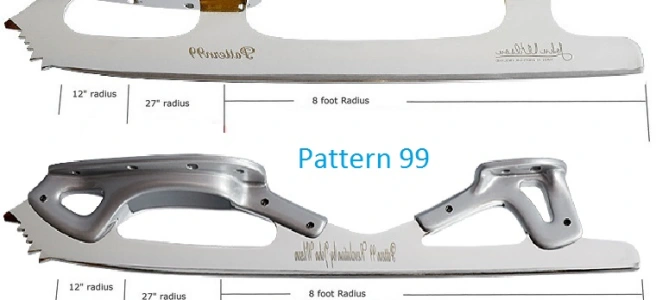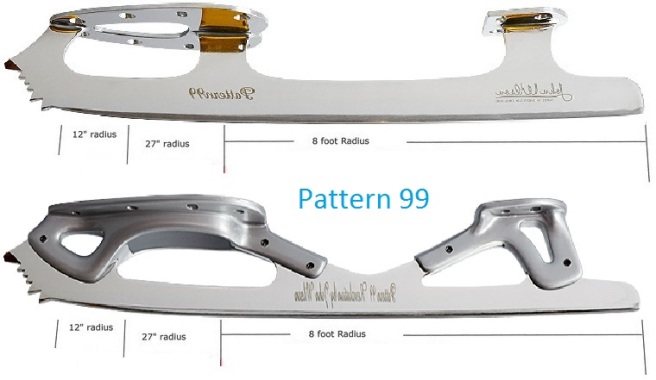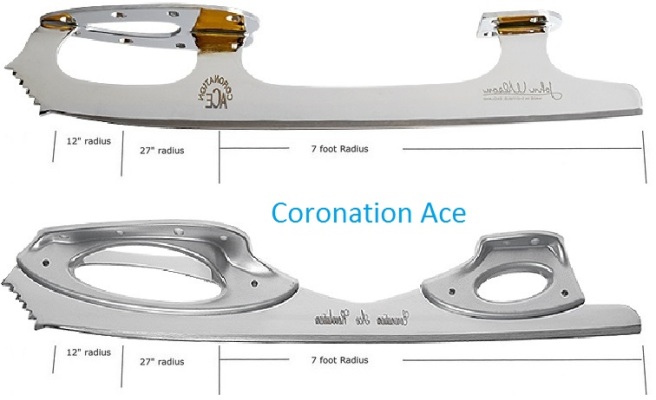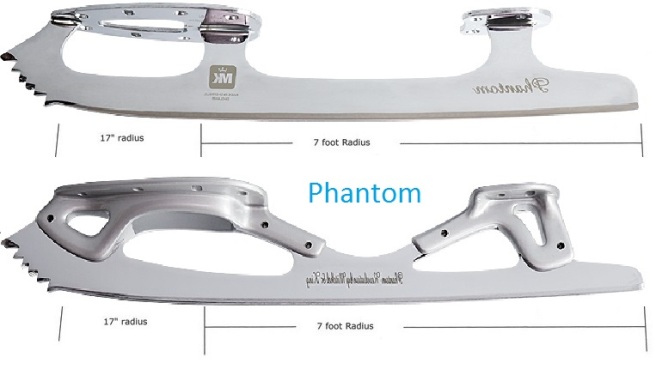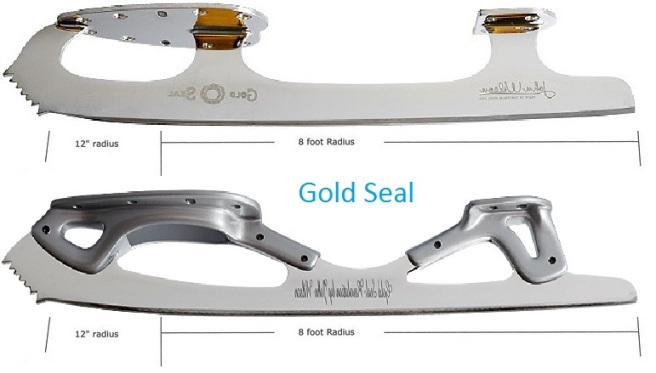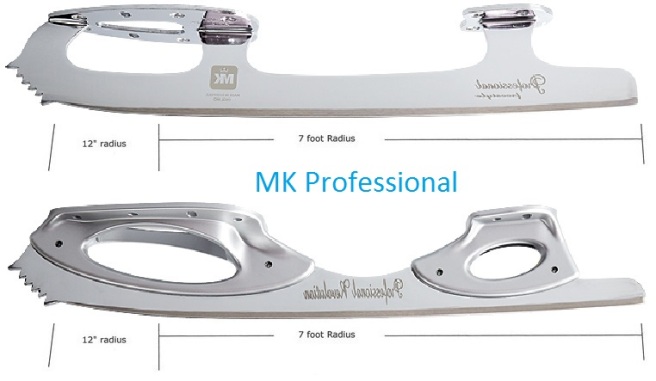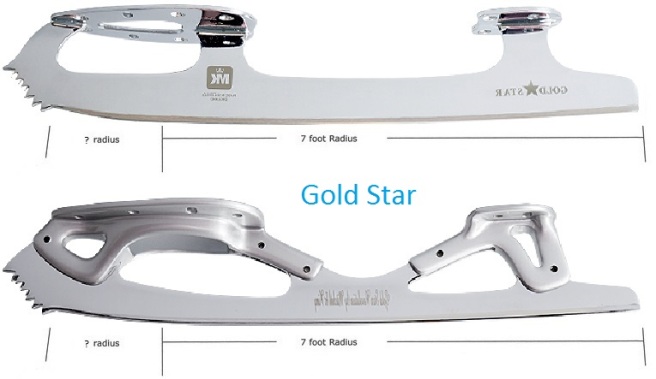Here is a more detailed look at the blade profiles mentioned in a previous post.
One extra thing to note is the curvature of the blade is NOT consistent when buying new blades because HD Sports (John Wilson; MK) hand sharpen the blade (hand sharpening is done using a manual machine, and not a computer controlled or automatic). Thus, a curvy 7′ rocker may have parts along it that vary wildly from the stated figure. Furthermore, due to the hand sharpening, the edges may not be even (i.e. if you place the blade on a flat surface, you’ll find it may lean to one side).
It is therefore highly recommend you do two things when you have bought your new blades:
- Measure the rocker. Make sure they are very close to the stated figure. You may wish to return the blade if the actual radii differs drastically. This is because to get the correct profile, you’ll have to have it sharpened extensively, thus reducing the lifespan of the blades.
- Have your blades sharpened by a professional who uses an automatic machine, designed for figure blades (to produce more accurate and precise results).
A word about the “sweet” spot.
The “sweet” spot is the ideal part of the blade to spin and perform three turns on. This starts where the curvature of the main (glide) rocker changes, indicating the beginning of the spin rocker, and ends where the blade cannot rock any further as the drag pick comes into contact with the ice.
Next time you step on the ice in a pair of skates, stand still and rock your foot forward until the drag pick hits the ice (you can’t skate on the curved part of the blade immediately behind the toe pick). Then slowly move your foot back until the drag pick is barely contacting the ice. This is the general location of the “sweet” spot. It should feel very slick with little to no friction if you move your foot side to side. How that spot translate directly to where you are pressing through your foot will vary person to person, but ideally should fall on the forward portion of the ball of your foot.
To best have an idea of where on the foot you spin, spin on a wooden floor in socks. That is probably your best indication of the foot parts exerting pressure on the boot and blade. The “sweet” spot should fall under the area where most of your weight is on spins. Keep in mind that you can still do a successful spin even if you miss this “sweet” spot. Your blades will just cause more friction and your spin will be slower, or you may travel more. Also keep in mind that you will need to put pressure at different points on your foot depending on what spin you are doing. (E.g. upright vs sit spin). 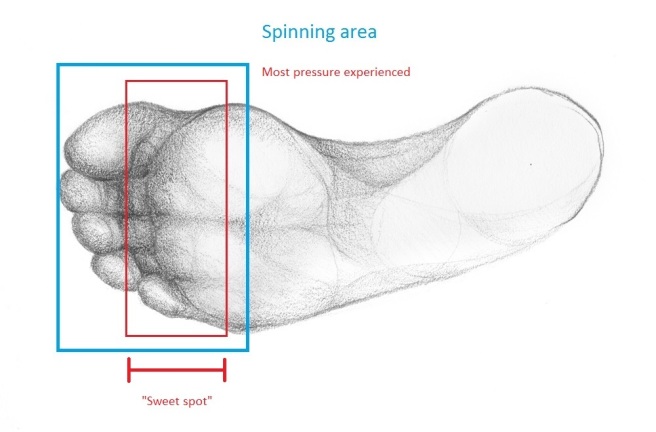
Now that you are aware of where the location of the “sweet” spot is on your foot, you now need to translate this information to finding the blade that most suits you. Be aware that anatomical differences (shorter toes or ball of foot), foot problems (e.g. pronation, high/flat arches), and different techniques for spinning, affects how you spin, and thus, the placement of the “sweet” spot.
Here is an example of ‘John Wilson Coronation Aces’ compared to a standard foot.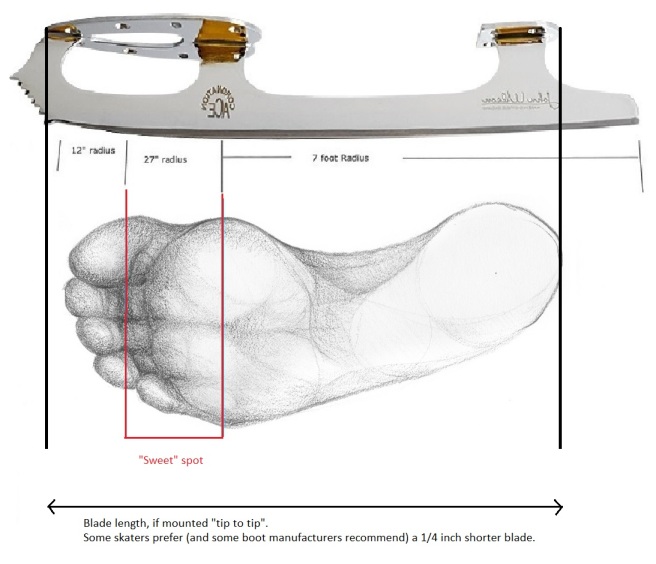
We can see that for the above skater, the ‘Coronation Aces’ are a good match in that the spin rocker is correctly placed. This allows for the skater to spin on the ball of their foot and make use of the blade’s profile. Also to note, that different size blades affect the “sweet” spot; a shorter blade has a shorter blade profile to match a shorter foot.
Now, here’s a look of the same foot, but in a blade profile where the spin rocker is more curved (MK Professional), hence the “sweet” spot, and the spin rocker start a bit further forward. This also means there is less area to spin on, which means your spins have to be centred very well!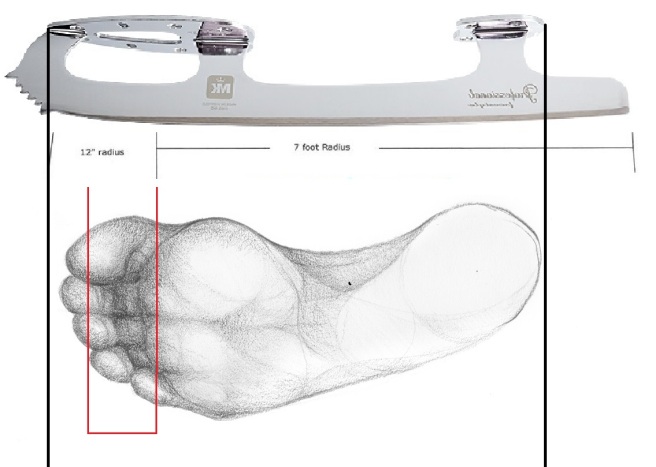
This blade is less ideal for this skater, as to centre their spins on the “sweet” spot, they have to press further forward with their foot, and on their toes, which may be more challenging and fatiguing. This forward blade profile, and curvier spin rocker, also means that the skater has to point their toes more for jump take-offs to access the toe picks. They must also remember to roll back down to the heel after landing because the rocker is curvier (more “rocky”).
With each new blade, even from the same model, there is an adjustment period. Skate sharpening can also change the profile of your blade, so bear this in mind. In fact, some expert sharpeners can adjust the “sweet” spot for you, so even if your blade is not ideal when it’s ‘new’, there does exist an option to fix the problem without buying new blades.
There are arguments as to what affects the spin more. Is it the main (glide) rocker being more curved (7′ as opposed to 8′), or the spin rocker being more curved (12″ vs 27″)? From an anecdotal experience, it’s both! Hence, the MK Gold Star and MK Professional blades are probably the best spinning blades on the market, with their 7 foot glide rocker, and 12 inch spin rocker. The trade-off comes in the form of jumps though, remember?
